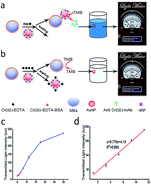A portable chromium ion detection system based on a smartphone readout device†
Abstract
Existing quantitative tests for detecting chromium ions (Cr) require complex instruments and trained technicians and therefore cannot be used on-site or in resource-limited areas. Herein, we designed a portable Cr(III) detection system based on a smartphone readout device and an Enzyme-Linked Immunosorbent Assay (ELISA). The competitive ELISA is based on a specific monoclonal antibody against Cr(III)–EDTA and gold nanoparticles amplified the HRP signal. The readout device is comprised of a light source and a miniaturized assay platform. A smartphone with an application called “Light Meter” was used to record and process detection signals from the readout device. To demonstrate the performance, the system was used to detect Cr(III) in spiked water samples. The novel system had a positive correlation (R2 = 0.995) between the signal and Cr(III) concentration with a linear detection range of 0.8–50 ng mL−1 and a limit of detection of 0.81 ng mL−1. Furthermore, the assay was used to detect Cr(III) in Pearl River water samples. The results obtained by this method were consistent with those obtained by ICP-MS. This test system also showed a good selectivity for the detection of Cr(III) compared with other heavy metals. These results from our portable detection system based on a smartphone readout device show promise in using the system for environmental monitoring.



 Please wait while we load your content...
Please wait while we load your content...